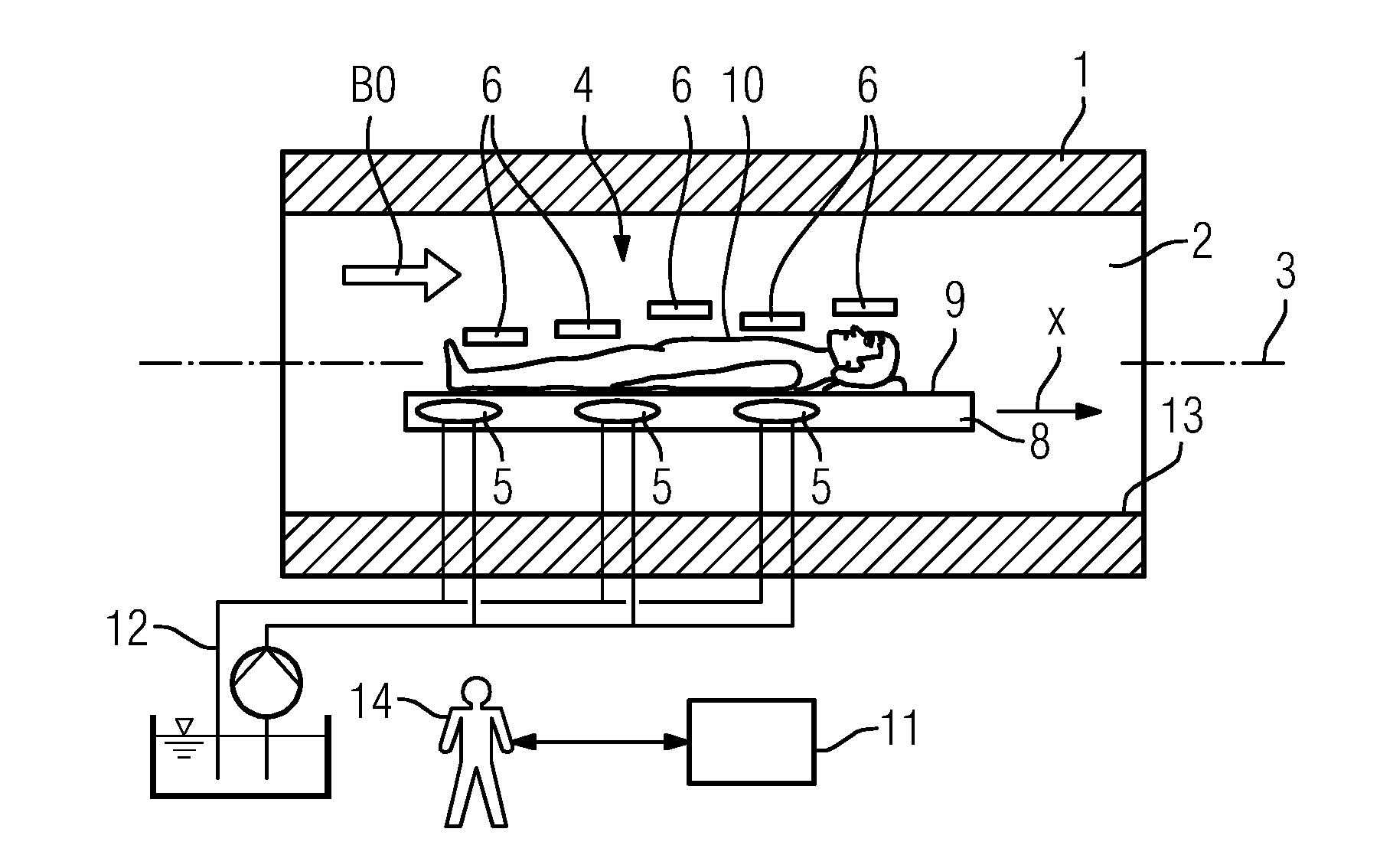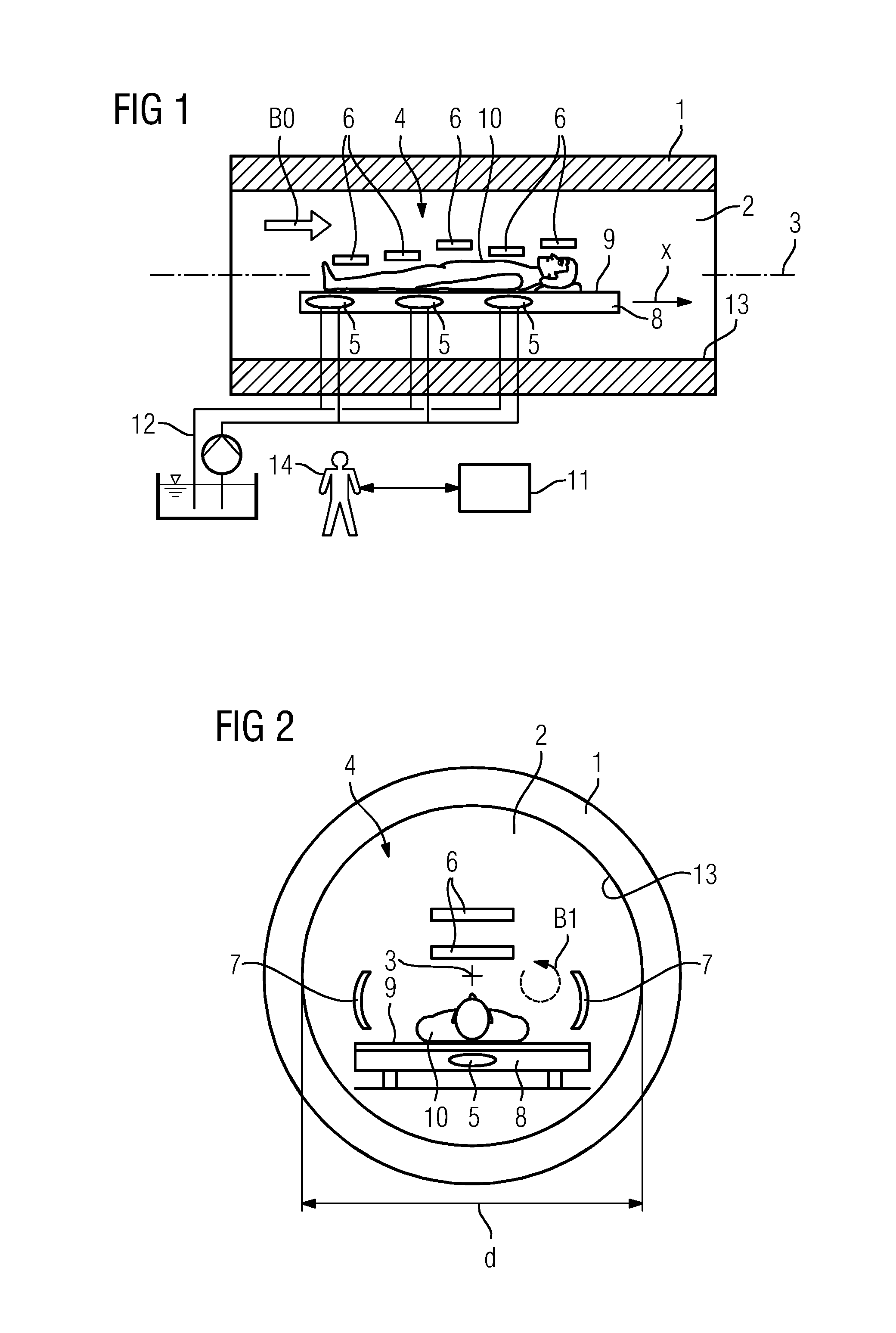Magnetic Resonance System with Whole-Body Transmitting Array
- Summary
- Abstract
- Description
- Claims
- Application Information
AI Technical Summary
Benefits of technology
Problems solved by technology
Method used
Image
Examples
Embodiment Construction
[0023]As shown in FIGS. 1 and 2, a magnetic resonance system has a basic magnet 1. The basic magnet 1 radially surrounds a cylindrical examination volume 2 of the magnetic resonance system. The examination volume 2 defines a longitudinal axis 3. The basic magnet 1 generates a basic magnetic field B0 in the examination volume 2. The basic magnetic field B0 is constant over time and is spatially homogeneous or at least substantially homogeneous inside the examination volume 2. By way of example, the basic magnetic field B0 has a strength of at least 3.0 Tesla and, in some embodiments, 7.0 Tesla. The magnetic resonance system also has a gradient system (not shown).
[0024]The magnetic resonance system also has a send structure 4. The send structure 4 includes at least first transmitting antennae 5 and second transmitting antennae 6. In some embodiments, the send structure 4 also includes third transmitting antennae 7. There may be a plurality of first transmitting antennae 5 and a plural...
PUM
 Login to View More
Login to View More Abstract
Description
Claims
Application Information
 Login to View More
Login to View More - R&D
- Intellectual Property
- Life Sciences
- Materials
- Tech Scout
- Unparalleled Data Quality
- Higher Quality Content
- 60% Fewer Hallucinations
Browse by: Latest US Patents, China's latest patents, Technical Efficacy Thesaurus, Application Domain, Technology Topic, Popular Technical Reports.
© 2025 PatSnap. All rights reserved.Legal|Privacy policy|Modern Slavery Act Transparency Statement|Sitemap|About US| Contact US: help@patsnap.com



